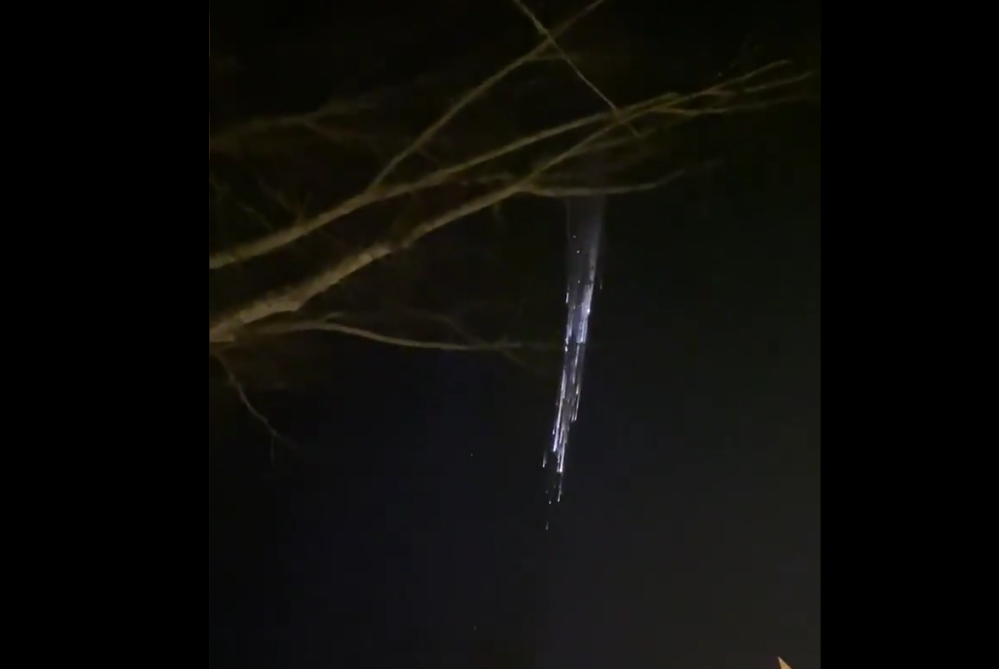
Skywatchers in the Pacific Northwest saw an unexpected display of pyrotechnics overhead on Thursday night (March 25).
In video footage, a slow-motion meteor shower appears to strafe overhead, with dozens of glowing orbs dragging fiery tails across the sky. In reality, it was likely the death spiral of a SpaceX rocket, experts said.
"The widely reported bright objects in the sky were the debris from a Falcon 9 rocket 2nd stage that did not successfully have a deorbit burn," the Seattle branch of the National Weather Service (NWS) tweeted shortly after the event. "Based on the observed video, this looks more likely than a bolide meteor or similar object, as they would be moving far faster on impact with our atmosphere." (A bolide is a bright meteor that is often called a fireball, according to NASA.)
Cornelius Or. pic.twitter.com/QrLfbnUGCBMarch 26, 2021
According to Harvard astronomer Jonathan McDowell, the debris likely came from a Falcon 9 rocket that launched on March 4 to put several Starlink satellites into orbit. (Starlink is a constellation of more than 1,000 internet satellites being constructed by SpaceX; the constellation will eventually include more than 30,000 satellites.)
As Live Science previously reported, Falcon 9 rockets reach the atmosphere thanks to two main boosters, or stages. The first stage, which houses nine engines, lifts the rocket off the launch pad; eventually, the first stage decouples and can be steered remotely back to a SpaceX ship for reuse (sometimes that part doesn't work out so well).
The second stage, which contains a single engine, guides the rocket into orbit, then is usually left to decay in the atmosphere, becoming one more piece of space junk.
According to McDowell, the second stage of the rocket that launched on March 4 "failed to make a deorbit burn" after launching the Starlink satellites, meaning it didn't come down where it was expected to. After three weeks of drifting in the atmosphere, it finally came down on Thursday, breaking apart in a spectacular explosion.
The NWS stressed that there is no risk that any of those fiery pieces of debris made it through the atmosphere to cause damage. And according to McDowell, big pieces of space junk burn up in our atmosphere more frequently than you might think.
"This is the 14th piece of space junk with a mass over one tonne [1.1 tons] that has reentered since Jan 1st this year," McDowell tweeted. "In other words, about one a week. Plus lots more smaller bits of course."
Originally published on Live Science.
Article From & Read More ( Mysterious explosion over Western US was likely SpaceX rocket debris, experts say - Livescience.com )https://ift.tt/2Pzm5Jc
Science
No comments:
Post a Comment